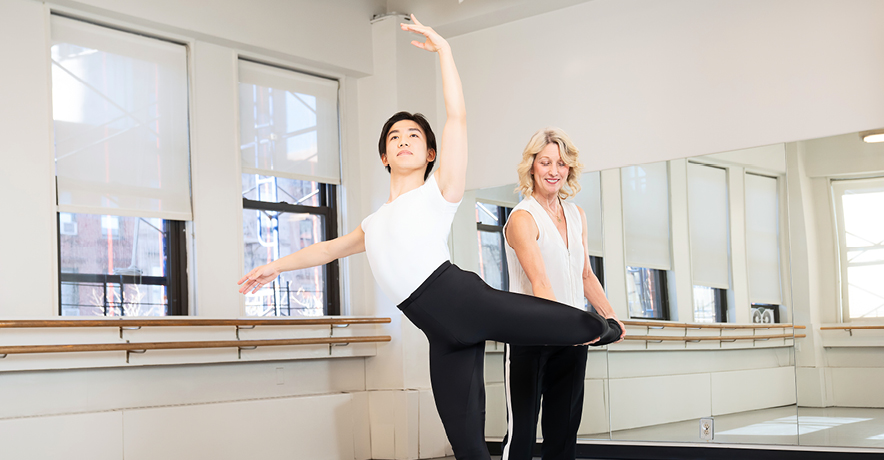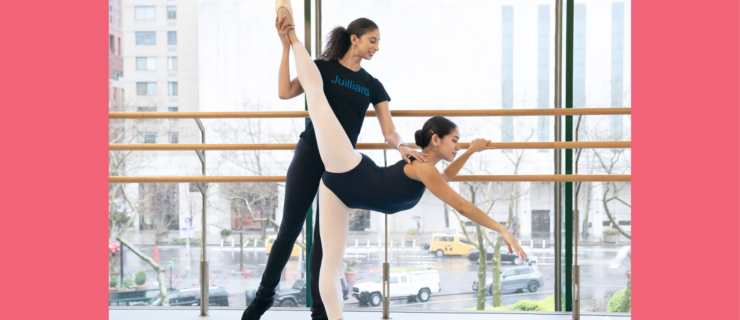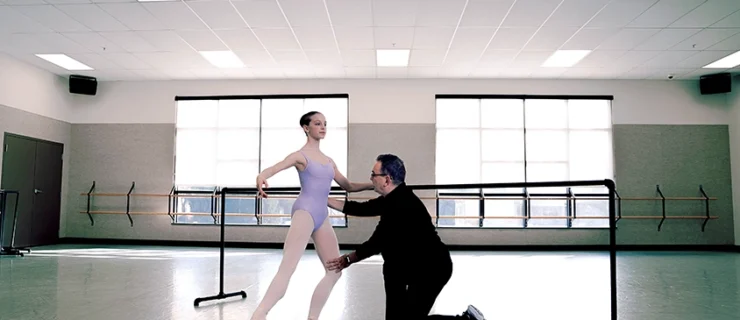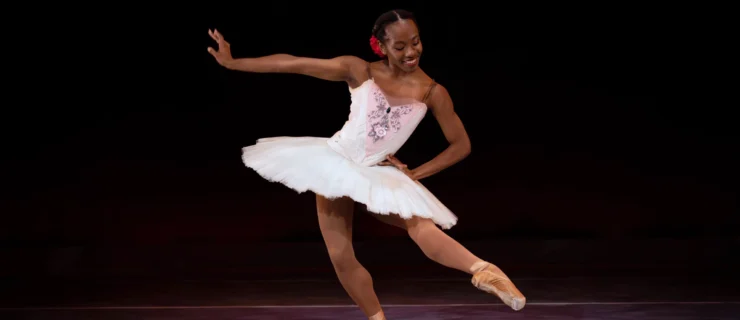Mastering Attitude Pirouettes En Dedans With Stacey Calvert
Attitude turns en dedans are one of the most striking steps that dancers execute, from their day-to-day classes to their variations onstage. Mastering this type of turn with consistency, precision and grace requires continual effort and discipline in class.
Stacey Calvert, artistic advisor at Ballet Academy East (BAE) in New York City, acknowledges that attitude turns can be very challenging. That said, “teaching these turns is extremely important to have in your repertoire,” she says.
BAE follows an in-depth curriculum developed by Marcia Dale Weary, the founder of Central Pennsylvania Youth Ballet (and adapted for BAE by Darla Hoover), which centers on the idea of breaking steps down, focusing on placement and perfecting the basics. With that, Calvert says the key to success for attitude turn is to focus on the foundation.
It all starts at the barre.
Calvert recommends preparing for attitude turns in center by doing turning exercises at the barre. At BAE, a common exercise students work on with one hand on the barre is coupé, relevé and turn, to understand the feeling of the heel coming forward and staying turned out while holding the core together.
“It’s about setting dancers up for success in the center, like building the foundation of a house,” Calvert says.
Find your alignment.
To be a strong, consistent turner, Calvert notes, your position needs to be strong and aligned. She also recommends practicing relevé attitude turns with a quarter turn to face the wall, plié in the attitude, allongé into arabesque (in relevé or plié), pas de bourrée, close fifth and repeat to the other side. By strengthening the balance of the standing leg and focusing on the inner-thigh-to-heel connection, you gain fundamental skills for a successful full en dedans turn.
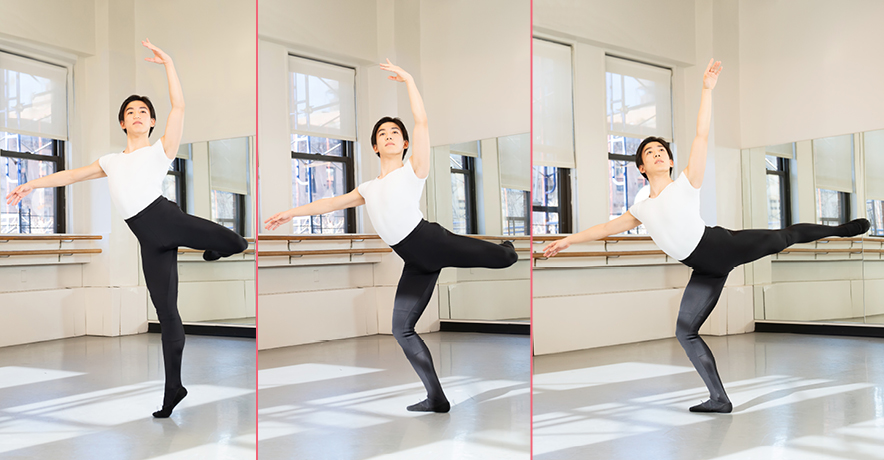
Practice every day.
Calvert believes that dancers should start working on attitude turns early in their training so that they don’t become fearful of them later. “[Then] it’s important to do it every single day. That’s something Marcia always did: attitude and à la seconde turns every day, in every single class.”
Avoid “the twist.”
A big mistake Calvert sees in the studio is what she calls the “twist,” where dancers twist their torso and use the force of their arms and shoulders to initiate the turn. This throws off alignment, making it nearly impossible to stay over the supporting leg. Before the turn, you should always be able to see both shoulders and both hips in fourth position.
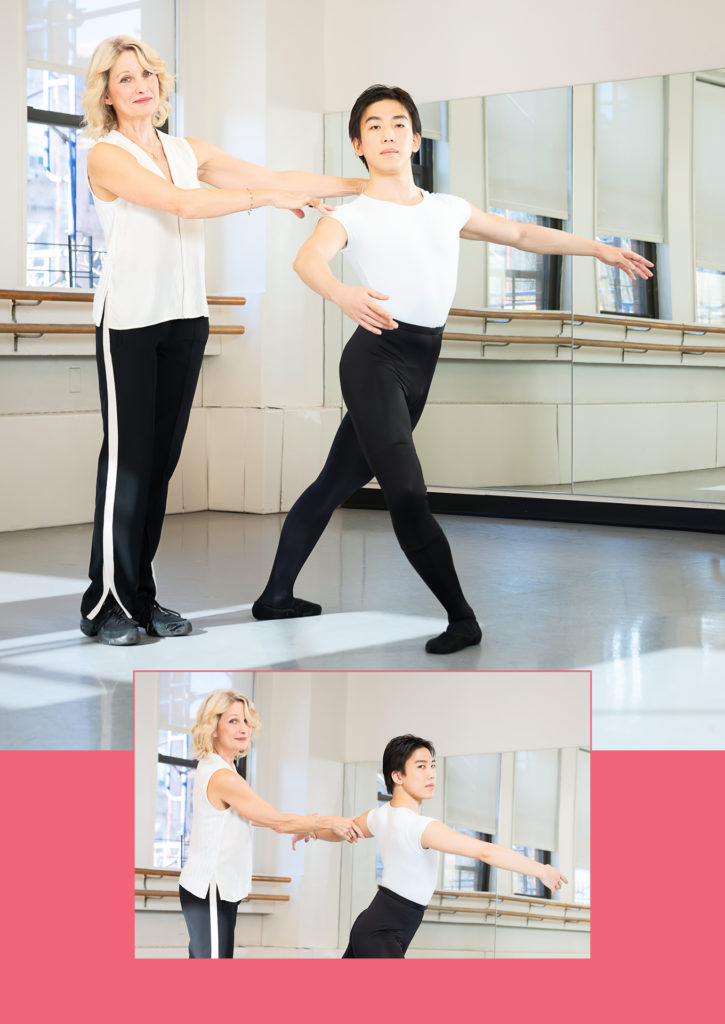
Let your heel initiate the turn.
The momentum of the turn should come from the plié, relevé, inner thigh, back and the rotation of the heel in your standing leg. “It’s just like an attitude promenade in the center with the heel moving forward with you. If you relevé and your thigh turns in, it’s really hard to do any en dedans turn, because it’s all about turning out,” she says.
“Knee high, heel low.”
Your attitude leg’s position is especially important; keep the thigh turned out, the leg crossed behind the body, your attitude short and square, and the knee higher than the heel. Dropping the knee makes it harder for the supporting leg to rotate during the turn.
Don’t crunch the torso.
Try not to collapse into your working side. “If the knee drops and your torso crunches, your back can’t help you in the turn,” Calvert explains. Lift up in your supporting side, too, as soon as you relevé, so that your upper body doesn’t tip forward or sideways.
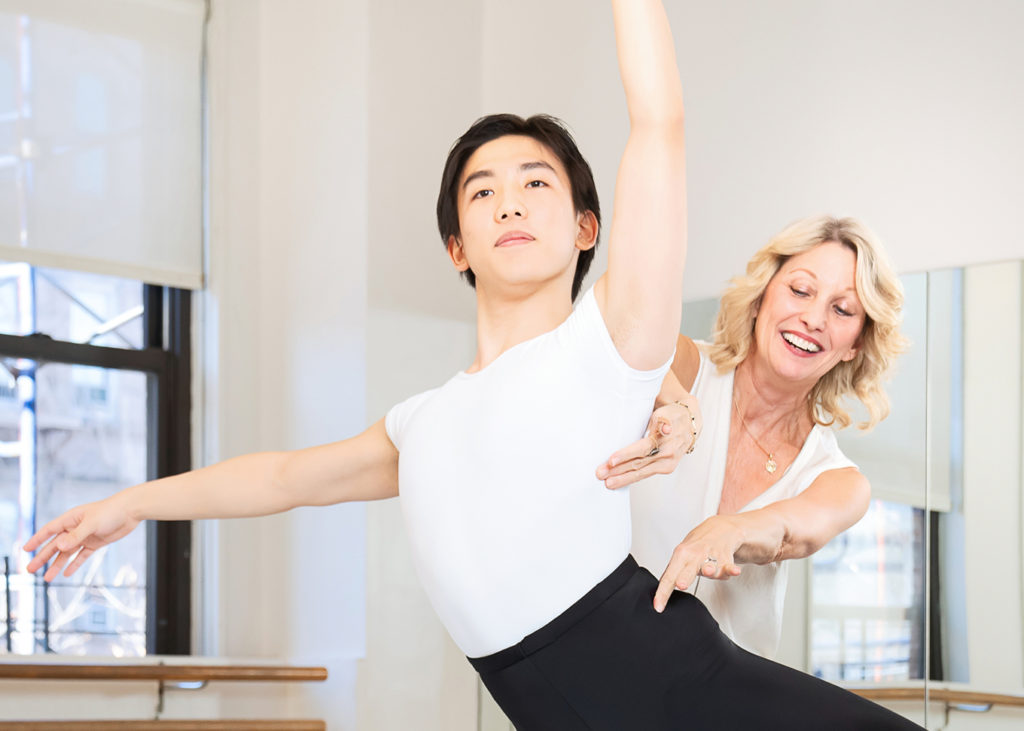
Technique enhances artistry.
“When you’re first starting out, focus on just the step,” says Calvert. “When you’re closer to mastering a successful double attitude turn, it can be fun to play with the step within the context of the choreography.”
